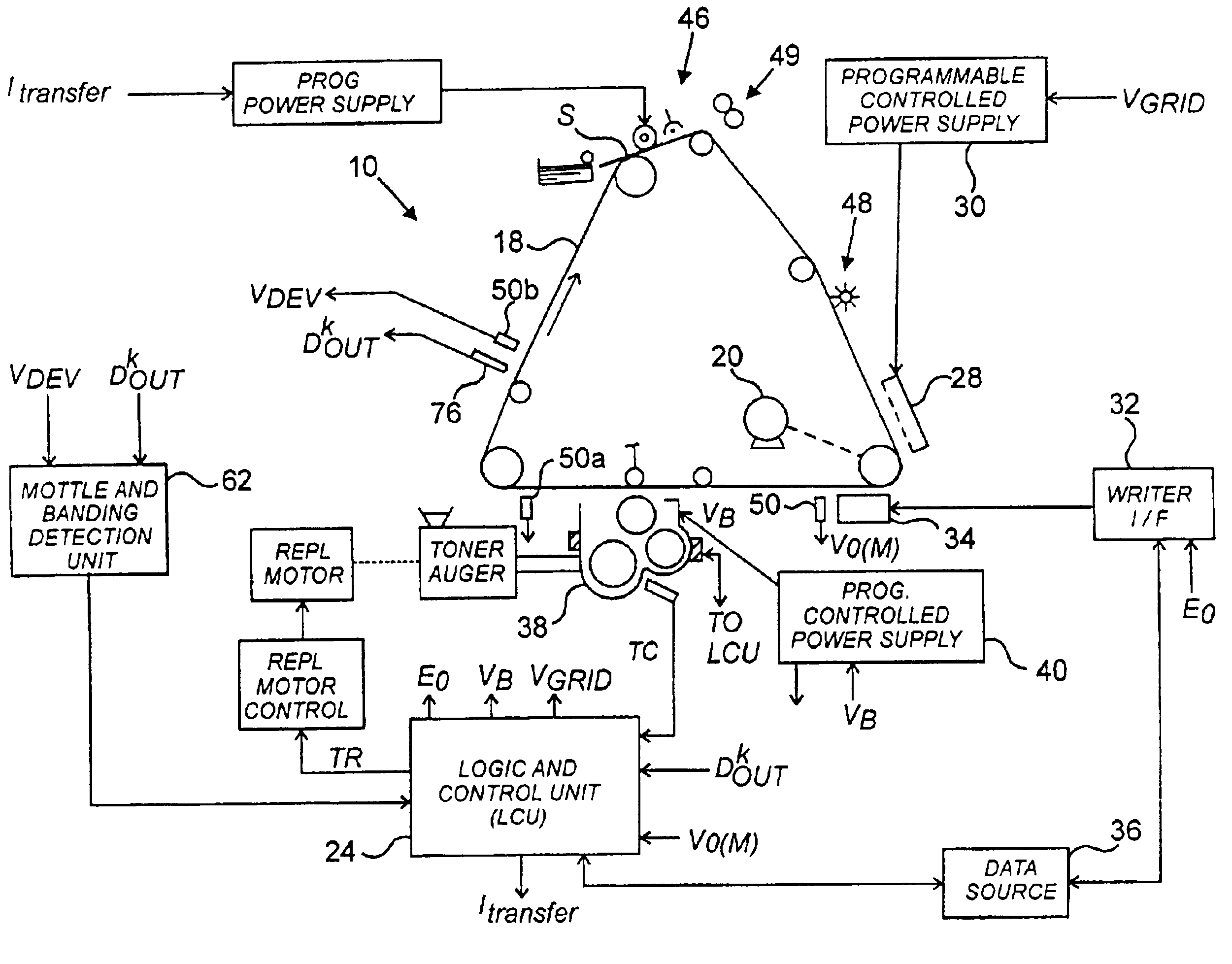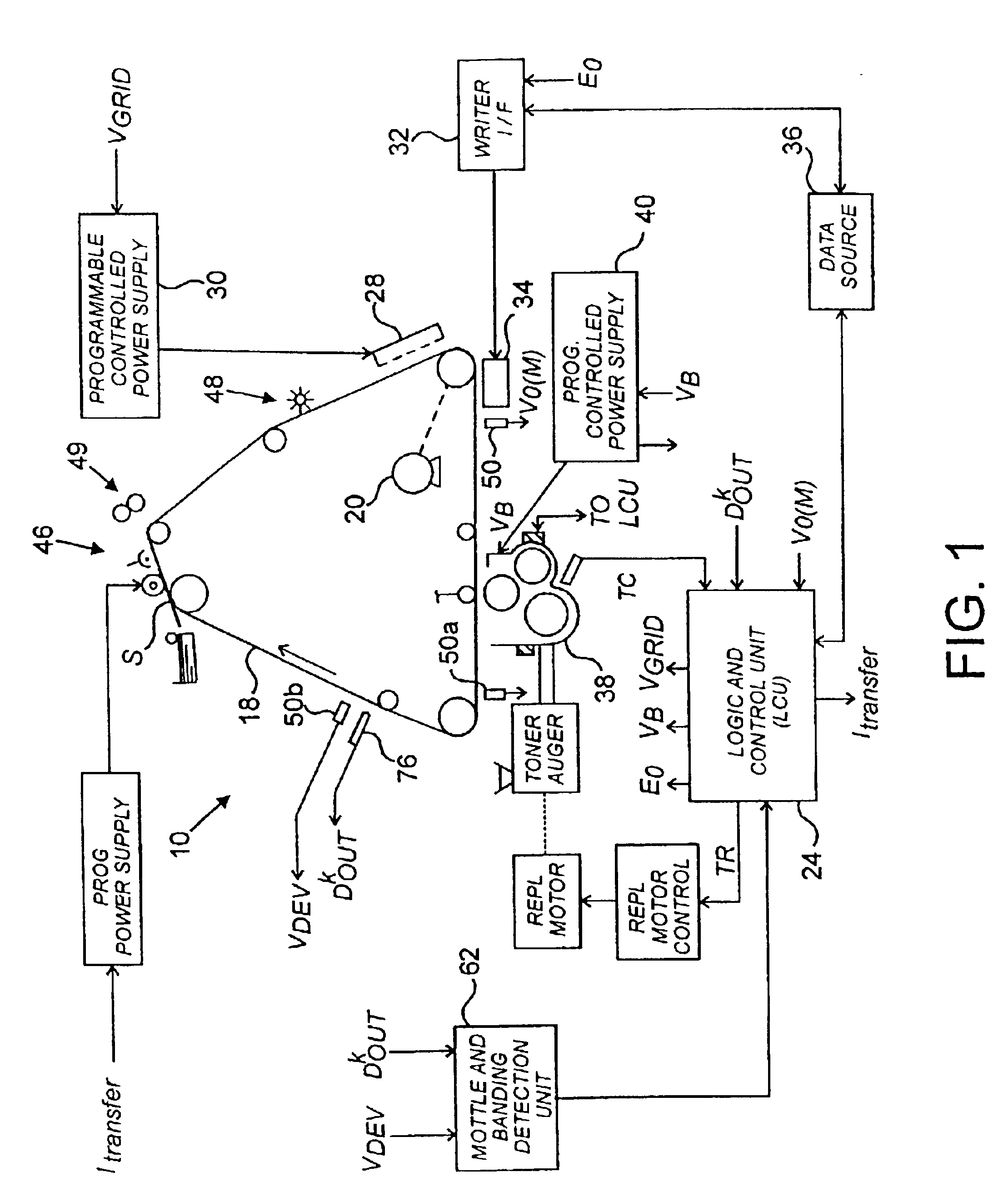Reduction of banding and mottle in electrophotographic systems
a technology of electrophotography and banding, applied in the field of electrophotographic recording apparatus, can solve the problems of undesirable banding or mottle levels in images that have acceptable density on average, and achieve the effect of reducing mottle or banding
- Summary
- Abstract
- Description
- Claims
- Application Information
AI Technical Summary
Benefits of technology
Problems solved by technology
Method used
Image
Examples
Embodiment Construction
[0021]The machine 10 diagrammed in FIG. 1, an electrophotographic printer, is typical of devices containing the invention. In machine 10, a moving recording member such as photoconductive belt 18 is driven by a motor 20 past a series of work stations of the printer. A logic and control unit (LCU) 24 has a digital computer that operates a stored program for sequentially actuating the electrophotographic stations. The invention's mottle and banding detection unit 62 provides signal inputs to LCU 24 to direct changes to operating parameters for machine 10. Detection unit 62 is shown here as a separate component, to highlight the invention's structure and operation. Detection unit 62 may exist as a separate component or as an integrated subsystem of LCU 24.
[0022]In typical devices such as machine 10, charging station 28 sensitizes belt 18 by applying a uniform electrostatic charge of predetermined primary voltage V0 to the surface of the belt 18. The output of the charger 28 is regulate...
PUM
 Login to View More
Login to View More Abstract
Description
Claims
Application Information
 Login to View More
Login to View More - R&D
- Intellectual Property
- Life Sciences
- Materials
- Tech Scout
- Unparalleled Data Quality
- Higher Quality Content
- 60% Fewer Hallucinations
Browse by: Latest US Patents, China's latest patents, Technical Efficacy Thesaurus, Application Domain, Technology Topic, Popular Technical Reports.
© 2025 PatSnap. All rights reserved.Legal|Privacy policy|Modern Slavery Act Transparency Statement|Sitemap|About US| Contact US: help@patsnap.com



